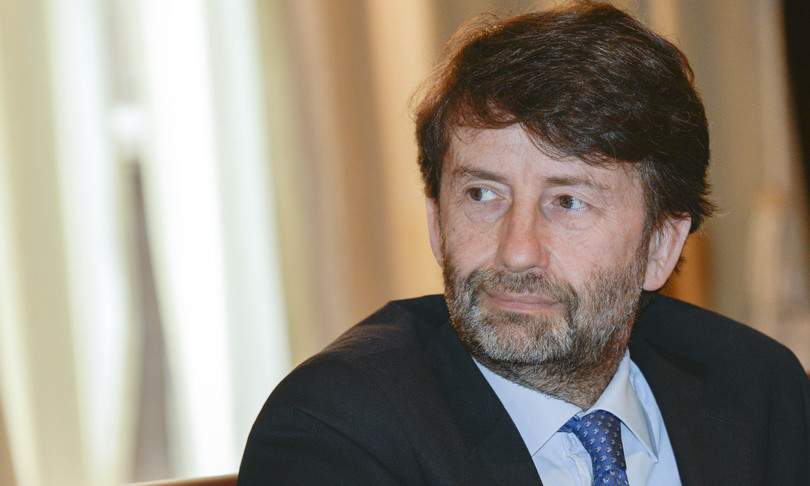The role of private individuals is crucial in protecting the country’s cultural heritage. This was said today by Culture Minister Dario Franceschini during his speech at the presentation of the restoration of the fresco of theAurora by Guido Reni (1613-1614) in the Casino dell’Aurora Pallavicini, the building erected in the seventeenth century by Scipione Borghese on the site of the Baths of Constantine at the Quirinal and then in 1704 purchased by the Pallavicini Rospigliosi, from whom it takes its name and who are still its owners. The building is not to be confused with the other Casino dell’Aurora, that of the Ludovisi where Caravaggio’s only mural painting is located, and which is currently for sale.
In addition to the minister, the special superintendent of Rome, Daniela Porro, the director of the Borghese Gallery, Francesca Cappelletti, the head of the Prado’s Department of Italian and French paintings, David García Cueto, and restorers Laura Cibrario and Fabiola Jatta, who were materially responsible for the intervention, spoke at the presentation.
The Casino dell’Aurora Pallavicini is now managed by a private company, which opens it to the public once a month (the structure is used as a conference center and location for events of various kinds). “A restoration of immense value and a story of great collaboration between institutions, between public and private,” said Minister Franceschini. “This successful experience requires everyone, starting with the Ministry, to work with even greater conviction on the enhancement of the immense cultural heritage of both the state and private sectors. I believe our country should have a greater awareness of the importance of this unique wealth we have.”
“The collaboration between the state and private individuals,” Franceschini added, “is perfectly in line with the dictates of our Constitution, which, in Article 9, requires an overall and shared commitment of everyone, including citizens. Unfortunately, this was not always the case in the past also due to regulatory ups and downs in this area. We have reversed the trend, but we must always do more. Not least because if the legal system imposes, as is right and inevitable, constraints and limits, the state must also recognize aid, support, protection, protection in a convincing way, even with regard to the heritage guarded by private individuals. The public part is very important, but the beauty of privately owned art and culture, which is legally the heritage of the latter, but belongs to the wealth of the country, is also very wide and widespread. Thank you, therefore, to the Pallavicini family for what they have done to restore this fresco, but also for what they have done over the decades to protect these beauties and artifacts.”
 |
| Franceschini reiterates: private individuals are key to heritage protection |
Warning: the translation into English of the original Italian article was created using automatic tools. We undertake to review all articles, but we do not guarantee the total absence of inaccuracies in the translation due to the program. You can find the original by clicking on the ITA button. If you find any mistake,please contact us.